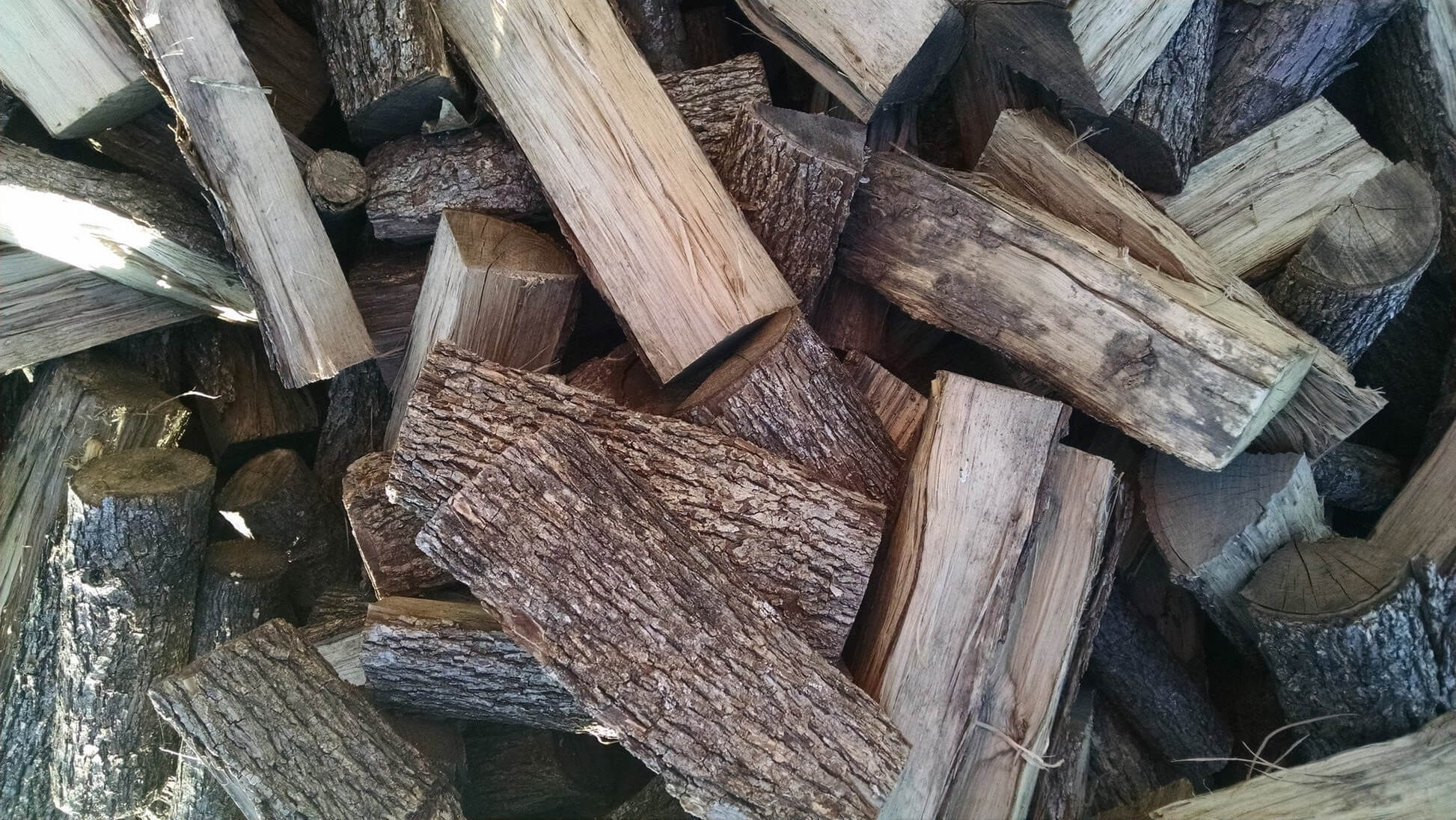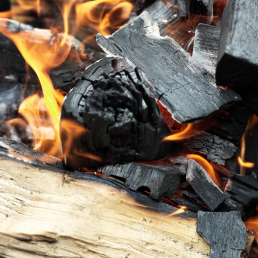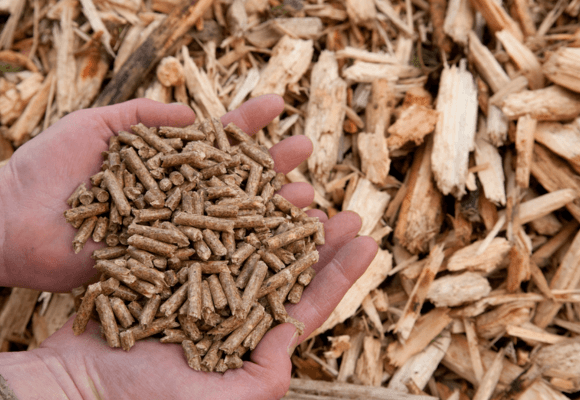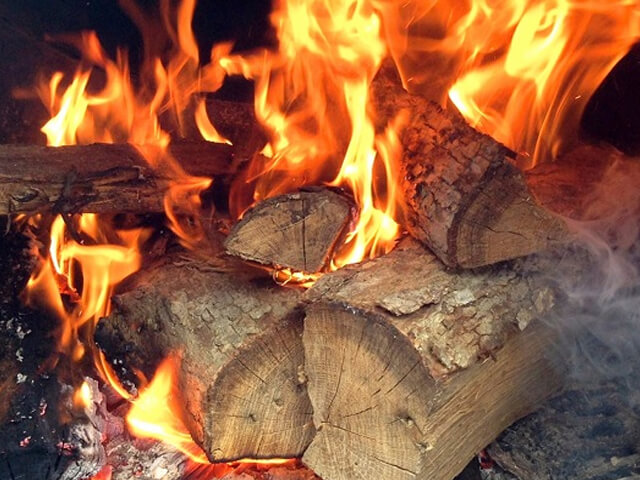Choosing between oak and pecan wood for smoking can significantly influence the flavor profile of your barbecued meats. Both woods are highly prized in the smoking community for their distinctive characteristics and the depth they add to the culinary experience.
Oak wood, known for its versatility, imparts a medium to strong flavor that complements a wide range of meats. Its ability to burn slowly and evenly makes it a go-to for many pitmasters who are after a consistent and reliable smoke. Whether you’re slow-cooking a brisket or imparting a golden crust on a rack of ribs, oak provides a stable base of flavor that’s robust without overpowering the natural taste of the meat.

Pecan, on the other hand, is a hardwood that burns cooler and offers a subtler, sweeter note compared to the intense profile of oak. It’s often favored for its nutty undertones that work exceptionally well with beef and poultry, adding a Southern twist to the smoked dishes. Pecan’s milder flavor is also ideal for those who prefer a less smoky taste or for smoking lighter meats that could be overwhelmed by stronger wood varieties.
The choice between oak and pecan for smoking ultimately comes down to personal preference and the specific qualities you want to infuse into your meats. Both offer their own unique contributions to the smoking process, and understanding the influence of each can help you elevate your barbecue to the next level. Whether you’re a seasoned smoker or experimenting with your first smoke, the type of wood you select is a foundational step in crafting the desired flavor profile for your culinary creations.
Overview of Oak for Smoking
Oak is a quintessential smoking wood that stands as a pillar in the world of barbecue. Known for its strong but not overpowering taste, it’s a favorite among many who aim for a traditional smoky flavor. There are several types of oak, including white oak and red oak, each offering a slightly different nuance to the smoke.
Oak wood imparts a medium to strong flavor, with a slight sweetness that’s more pronounced in white oak. It’s known for adding depth to the smoky taste without overshadowing the natural flavors of the meat.
Burn Characteristics:
Oak burns slowly and predictably, providing a long-lasting heat source that’s ideal for extended smoking sessions. Its ability to maintain a steady temperature makes it a reliable choice for both newcomers and seasoned smokers.

Characteristics:
- Burns slowly and evenly, providing a steady smoke.
- Imparts a medium-strong flavor that enhances the meat’s natural taste.
- Versatile, suitable for a variety of meats from beef to seafood.
Common Uses:
Oak is versatile, suitable for a wide range of meats including beef, and lamb. It’s particularly favored for brisket and sausages due to its ability to complement the strong flavors and fatty textures.
Can you smoke with oak?
Yes, oak is indeed a good choice for smoking meat and as well also a good option for bbq. Oak is a popular choice among smoking enthusiasts due to its robust and versatile flavor profile.
It imparts a medium to strong smoke flavor, which is less intense than hickory or mesquite, but can be found on stronger than woods like apple or cherry.
It can make an excellent all-around selection for smoking a variety of meats including beef, pork, and lamb. Oak property is to burn slowly and consistently, providing a steady source of smoke for longer cooking periods. Seasoned oak for smoking is widely available in local and online markets.
Varieties of Oak Wood for Smoking
Discussing oak hardwood can be quite challenging due to the variety of oak types available. Among these, Post oak is particularly popular, favored by many people, including homeowners for backyard cookouts and as a top choice for restaurants. Due to its popularity and resulting high demand, some wood suppliers attempt to deliver white oak, live oak, and even red oak, claiming them to be post oak.
When your team are ready to smoking meats, the choice of wood can significantly influence the flavor profile of the finished product. Oak, renowned for its perfectly and versatile smoking qualities, stands out as a popular choice among pitmasters. We have conducted research and identified some of the most commonly used varieties of oak for smoking meat, gaining practical experience particularly with beef.
1.White Oak: White oak is a go-to for many smoking enthusiasts. It imparts a medium to strong flavor, less intense than hickory but more pronounced than fruit woods like apple or cherry. This wood is excellent for smoking beef, pork, and lamb, offering a balanced smokiness that complements rather than overpowers the meat’s natural flavors.
2.Red Oak: This Red oak is slightly sweeter and milder than white oak, red oak is ideal for those who prefer a subtler type of smoke flavor. It’s particularly well-suited for smoking poultry and fish, infusing a gentle smokiness that enhances without dominating the dish.
3.Post Oak: A staple in Texas barbecue, post oak is the wood of choice for classic smoked to make tasty brisket. It provides a mild flavor with a hint of sweetness, making it perfect for long smoking sessions. The subtle nature of post oak smoke allows the natural taste of the meat to shine through, while still contributing to that coveted smoky aroma. ‘Massive beef ribs, weighing 1-2 lbs, require an 8-hour cook. All the meat is smoked with post oak,’ the pitmaster explained, Giant dino ribs & bbq from Terry Black’s! Texas bbq.
4.Live Oak: Less common but equally interesting as like other, live oak provides a dense, slow-burning wood which is excellent for sustained smoking sessions. It has a stronger flavor profile compared to other oaks, so it’s best used with caution to avoid overpowering the meat.
5.Bur Oak: This variety offers a unique flavor profile, with a slightly nutty and earthy taste. It’s an excellent choice for those looking to experiment with new flavors in their smoking repertoire.
6.Black Oak: Black oak is another option you may not think about this verity but that provides a robust flavor, similar to hickory. It works well with hearty meats like beef and pork, adding depth and richness to the smoked dishes.
Overview of Pecan for Smoking
Pecan, a member of the hickory family, offers a milder and sweeter smoke. It’s a cherished wood among smoking aficionados who are looking for a nuanced touch of flavor to their dishes.
The smoke from pecan wood is gentle with a sweet, nutty undertone. It’s less intense than hickory, providing a subtler smokiness that’s perfect for more delicate meats.
Burn Characteristics:
Pecan burns cooler than oak and other hardwoods, which makes it excellent for smoking over longer periods. This cooler burn also means it’s less likely to overpower the meat with too much smoke.
Characteristics:
- Offers a cooler burn with a gentle, sweet smoke.
- Adds a nuanced flavor, ideal for poultry.
- Can create a beautiful golden-brown color on the smoked product.
Common Use
Pecan wood is often the choice for poultry. Its light and sweet smoke profile marries well with the tender fibers of chicken. When pecan is used in the smoker, it imparts a nutty flavor that compliments without dominating, allowing the natural flavors of the meats to shine through.
Seafood, with its delicate flavors, calls for a careful touch when it comes to smoking. Pecan wood answers this call beautifully, lending a subtle smokiness to everything from salmon to scallops.
Pecan’s mild flavor profile isn’t just for meats; it can also elevate the taste of cold-smoked items such as cheeses.

Similarities Between Oak and Pecan
When considering the characteristics of oak and pecan wood for smoking, one might notice several similarities that make them both suitable and popular choices among smoking enthusiasts. These similarities contribute to their wide usage across various smoking styles and preferences.
Sustainability and Availability
Both oak and pecan are hardwoods, which are generally sustainable and widely available in many regions, especially across the United States. Their prevalence makes them accessible choices for those looking to impart a natural wood flavor to their smoked dishes.
Heat and Burn Properties
As hardwoods, oak and pecan share the desirable quality of burning longer and more steadily than softer woods. This consistent burn is crucial for maintaining the necessary low and slow cooking environment ideal for smoking. They produce a good amount of heat without burning out too quickly, which is essential for the extended cooking times required for smoking meats to perfection.
Versatility in Smoking
Oak and pecan are celebrated for their versatility. They can be used with a variety of meats, from poultry to beef to seafood. Both woods can be mixed with other flavors, such as fruitwoods, to create a more complex smoke profile. This adaptability makes them favorites for both novice and experienced smokers who enjoy experimenting with different flavor combinations.
Mild to Medium Smoke Flavor
While there are differences in the intensity of their smoke, both oak and pecan fall into the mild to medium category when compared to other smoking woods like hickory or mesquite. This makes them excellent choices for those who prefer their smoked foods to have a balance of smoke and the natural flavors of the meat.
Ideal for Long Smoking Sessions
Due to their density and slow-burning nature, both oak and pecan are excellent for long smoking sessions required for larger cuts of meat. Whether it’s a brisket needing many hours in the smoke, these woods can sustain the necessary cooking duration without the need for frequent replenishment.
Complementary to Various Cuisines
Another similarity is their compatibility with different cuisines. Oak and pecan do not overpower the cultural seasoning and marinating profiles of various regional and international dishes. Instead, they complement the unique spice blends, rubs, and sauces used across diverse cooking traditions.
Differences That Define Them
When it comes to infusing rich, smoky flavors into meats, nothing beats the classic method of slow-cooking on a charcoal grill, where the choice between oak and pecan wood can significantly influence the taste.
While oak and pecan share some common ground as favored woods for smoking, it’s their differences that define and distinguish them, offering unique experiences to the palate. These differences can influence a pitmaster’s choice depending on the type of food being smoked and the flavor profile desired.

Flavor Intensity and Complexity
Oak: Known for its robust and pronounced smoke flavor, oak is a go-to for those who prefer a stronger smoke profile. It imparts a rich, earthy taste that can stand up to the flavors of heavier meats such as beef and game. Oak smoke tends to have a complexity that can enhance the savoriness of smoked foods, adding depth and a touch of sophistication.
Pecan: In contrast, pecan provides a much milder smoke, with a sweet and nutty flavor that is more nuanced than oak. This lighter touch makes pecan ideal for poultry, and even cheese, where it enhances without overwhelming the delicate flavors of these foods. Pecan is often described as imparting a fruitier and less intense smoke than oak.
Burn Rate and Temperature
Oak: As a dense hardwood, oak typically burns at a higher temperature, which is beneficial when smoking larger cuts that require a consistent and hotter heat source for an extended period. The higher burn rate of oak also means it can create a more substantial smoke ring, sought after by smoking enthusiasts for both visual appeal and flavor.
Pecan: Pecan wood burns cooler compared to oak, which can be advantageous when smoking foods that are prone to drying out or that need a gentler touch. The cooler temperature allows for a slower smoke infusion, which is key for achieving a moist and tender result in foods like fish and chicken breasts.
Suitability for Different Meats
Oak: Oak’s strong flavor profile and higher heat output make it an excellent choice for smoking red meats. It’s often used for brisket, steaks, and other hearty cuts that benefit from a longer cooking time and can absorb the more pronounced oak flavor without being overpowered.
Pecan: With its gentler smoke and cooler burning temperature, pecan is better suited for lighter meats such as pork, poultry, and seafood. Its subtle sweetness can also complement the flavors of vegetables and cheeses, making it a more versatile choice for a wider range of smoked foods.
Cultural and Regional Preferences
Oak: Oak is a staple in many traditional Western and European smoking practices, often used in the preparation of classic smoked foods like oak-smoked salmon in the UK or the revered smoked briskets of Texas BBQ.
Pecan: Pecan wood is closely associated with Southern American cuisine, where its sweet, mellow smoke is a signature in many regional dishes. It reflects the culinary heritage of the South, where the pecan tree is native and deeply rooted in the local culture.
Oak Vs Pecan- Which One Is Better For Smoking
While discussing the merits of oak and pecan about barbecue woods, alder, along with apple, peach, and beech, often comes up, especially in regions outside of Texas, where the preferred choices are mesquite, oak, pecan, and hickory.
When comparing oak and pecan woods for smoking, several factors need to be considered to determine which use one type of wood for the entire cook.
Oak is a classic choice for smoking. It’s known for its strong, but not overpowering, smoky flavor, which makes it an excellent all-purpose wood. Also oak is very similar to hickory to its profile but that is more mild also. Oak is particularly well-suited for larger cuts of meat like beef and pork. It burns slowly and evenly, providing a consistent smoke that’s ideal for long smoking sessions. Its availability is another advantage; Post oak is widely accessible in many regions, making it a go-to choice for many pitmasters.
Pecan, on the other hand, is a type of hickory and offers a sweeter, nuttier flavor compared to oak. This milder profile makes pecan wood a great choice for poultry and fish, where you might want to avoid the intensity of stronger woods like mesquite or hickory. Most of the BBq lovers also use Pecan pairs well with pork, imparting a subtle sweetness that complements the meat’s natural flavors. However, it burns faster than oak, so it may require pretty more attention during long smoking sessions.
Basically hickory smoke and oak smoke smell you will find completely different. But impart a different flavor on food. The choice between oak and pecan for smoking largely depends on personal taste preferences and the type of meat you are going to being smoked. Oak is a versatile, easily available wood that offers a strong, traditional smoke flavor.
Pecan, while not as universally available as oak spices you found in north America, provides a milder, sweeter smoke that works wonderfully with poultry, fish, and beef. Both woods have their unique strengths, making them excellent choices for different smoking needs.
Making the Choice
- Intensity of Flavor: If you prefer a stronger, more traditional smoke flavor, oak is the better choice. For a milder, sweeter taste, pecan is more suitable.
- Type of Meat: Consider the type of meat you’re smoking. Oak pairs well with heartier meats, while pecan is better for lighter meats.
- Smoking Duration: For longer smoking sessions, oak’s slow-burning characteristics are advantageous. Pecan might be more suitable for shorter, quicker smokes.
- Personal Preference: Ultimately, the choice depends on your personal preference for the smoke flavor and the specific characteristics of the meat being smoked.
To windup, both oak and pecan have their unique advantages for smoking. Oak provides a stronger, more traditional smoke flavor suitable for a wide range of meats, while pecan offers a milder, sweeter taste, ideal for poultry and pork. Your choice will depend on the type of meat you’re smoking, the desired intensity of smoke flavor, and your personal taste preferences.
Conclusion
While both oak and pecan are excellent for smoking, they each shine best with different types of meat. Definitely before entering your first BBQ competition or backyard cookout with friends or family, understanding the distinct flavors and characteristics of woods like oak and pecan is essential for smoking. Oak may be the go-to for a strong, earthy flavor, especially with beef, while pecan is your choice for a lighter, sweeter smoke, ideal for pork and chicken. Understanding these nuances can elevate your smoking game, turning a good barbecue into an extraordinary feast.
Frequently Asked Questions
Is Pecan a Type Of Oak Wood?
No, actually pecan is not a type of oak wood and also does not come in its varieties. Pecan is a type of hickory wood. Pecan trees and oak trees are totally different species, each producing their distinct quality of wood. Pecan wood is known for its strength, hardness, and durability, making it popular for furniture, and woodworking projects. Oak wood, on the other hand, is also highly valued for its strength and is commonly used for furniture, and in construction. Both types of wood have their unique characteristics and can be perfectly burned and provide heat for smoking.
